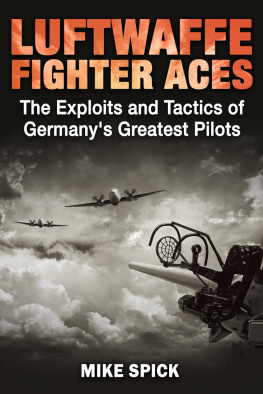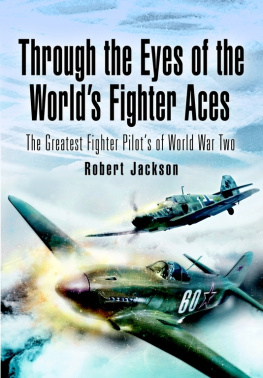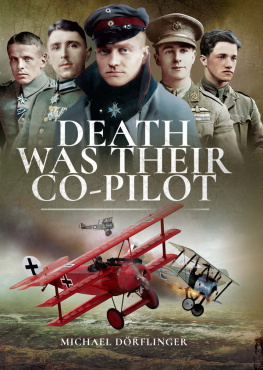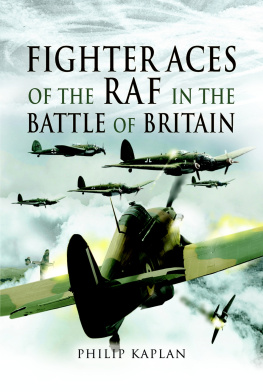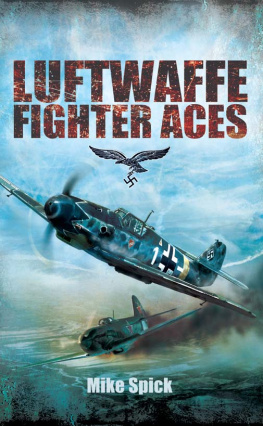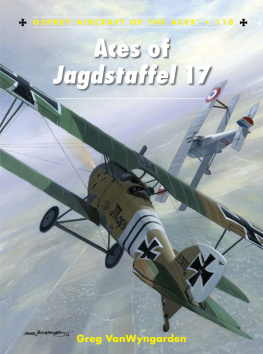ACE OF ACES
E. C. R. Baker
Silvertail Books London
Join our mailing list and receive TWO FREE BOOKS and updates on great new releases. Click HERE and get your free books today!
Prologue
At the side of the coastal road some sixty-five miles west of Alexandria in Egypt stands the El Alamein War Cemetery. Above the entrance to an enormous limestone cloister, which forms the northern boundary of the cemetery, is a dedicatory inscription which commemorates those of the Commonwealth forces who lost their lives in the Second World War and who have no known graves. On the inside walls of this cloister are fixed hundreds of Portland stone panels bearing the names of almost 12,000 soldiers, sailors and airmen, who gave their lives. About halfway down the 239th column appears the name of Squadron Leader M T St John Pattle, DFC. Apart from the decoration after the name there is nothing else to distinguish it from the thousands of other names on the columns; unless one was searching for this particular name one could quite easily miss it. It seems so unobtrusive and insignificant for such a distinguished flyer, and yet is compatible with the character of the man. Pattles natural reticence, modesty, and avoidance of the limelight, are probably the main reasons why so little has been heard of his exploits; and yet this man was a superb pilot, a deadly accurate marksman, and in the opinion of many, the most successful Royal Air Force fighter pilot during the whole of the war.
That he has never officially been acknowledged as the top-scoring fighter pilot is due to the fact that the Air Ministry were never in a position to confirm his victories in aerial combat. The last official score ever credited to Squadron Leader Pattle was for twenty-three victories announced in the citation to the award of a Bar to his Distinguished Flying Cross early in March 1941. No official records of his activities during those last few weeks of intensive operations in Greece exist today, because all official records were destroyed when Greece was evacuated by the British forces towards the end of April 1941. The only semi-official record is the Operations Book of 33 Squadron, which is held by the Air Historical Branch of the Air Ministry, and which is merely a summary of operations written from memory, aided by such information as could be gleaned from Middle East Intelligence Summaries many months after the evacuation; these actually bear out the fact that Squadron Leader Pattle destroyed a large number of German and Italian aircraft during the few weeks that he commanded 33 Squadron.
Squadron Leader Pattle was certainly Commanding Officer of 33 Squadron during the months of March and April 1941; the hundreds of officers and airmen who served with the squadron at this time all state that not only was Pattle the Commanding Officer of the squadron, but that he was the finest leader the squadron ever possessed, both as a pilot in the air and as an administrator on the ground; but even this point is not officially recorded; Squadron Leader Pattles personal and confidential Certificate of Service gives no indication that he ever served with 33 Squadron. The official records or even semi-official records relating to those last few hectic weeks of operations in Greece are by no means absolutely correct, though this is certainly not the fault of the Air Ministry authorities.
When I wrote The Fighter Aces of the R.A.F. 1919-45, I naturally assumed that all these records kept by the Air Ministry were, in fact, complete and, consequently, in the chapter concerning Squadron Leader Pattle, gave him credit for thirty-four confirmed victories, which placed him second in the list of top-scoring Royal Air Force pilots, immediately below that great Spitfire pilot Group Captain (now Air Vice-Marshal) J E Johnny Johnson, DSO, DFC. It was only much later when I met and talked to ex-members of 80 and 33 Squadrons that I realised how much I, and I have no doubt many others, too, had underestimated the efforts of this incredible South African fighter pilot who should perhaps be recognised as the outstanding Allied fighter pilot of the Second World War.
When one remembers that these victories were scored in less than nine months of active warfare almost half of them whilst flying in an obsolete biplane fighter, the Gloster Gladiator only then can one realise the greatness of this magnificent achievement, and wonder why this courageous, skilful and devoted airman was only awarded a Distinguished Flying Cross and Bar, whilst pilots of far less distinction on the Home Front received decorations galore. Perhaps if Squadron Leader Pattle had lived to come back to the United Kingdom he would have been given some of the recognition which he deserved. I am convinced that, had he lived, his name would have become as well known as Bader, Malan or Cunningham.
So many pilots showed great courage, but lacked discretion; it was only a matter of time before they fell by the wayside unless luck remained on their side. Squadron Leader Pattle was a tactician who regularly outmanoeuvred his opponents in clearly thought out, well planned moves, taking into account the elements of height, surprise and cloud cover, and the advantages of his own aircraft when compared with the aircraft being flown by the enemy.
He was far too sensitive and imaginative ever to be reckless in the air. Always he drummed into his fellow flyers the fact that they should temper dash with discretion, and constantly he told them that air fighting was as safe as crossing the street providing one thought ahead, thought quickly, and did not take any unnecessary risks. He was fully prepared, however, to take a risk when the life of a friend was in danger.
His successes in the air were by no means the result of brilliant tactical flying alone. His perfect eyesight, which enabled him to spot enemy aircraft when they were pinhead specks in the distance, was a big contributing factor. Never once was he surprised in the air; long before the enemy had seen him he was in a position to make his own attack. With some fighter pilots the spotting of aircraft at long distances was undoubtedly a gift, but many became proficient at it merely through constant practice. Pattle had perfect vision, which had been trained to an exceptional degree through intensive and untiring practice.
Perhaps Pattles greatest attribute, however, was his ability to shoot accurately. The way he used to send heavy Italian bombers hurtling earthwards in flames with merely two short bursts from his guns was uncanny. He had evolved a technique in dealing with Savoia 79s which all his colleagues copied with success. Attacking from the rear, he would fire a half-second burst at the tank situated between the fuselage and the port engine. Then he would formate in line astern with the bomber for about ten seconds to give the petrol time to leak out. Another brief burst with his guns into the petrol vapour, and down would go the aircraft in flames.
On the ground he was a quiet, calm and reflective man of integrity and great conscientiousness, devoted to the task of defeating the enemy. He set himself high standards, and through his own efficiency and example commanded the respect of everyone. All the members of his squadron admired him and trusted his judgement implicitly. As the new young commanding officer of a very tired squadron, battling against great odds, fighting against a falling-off in morale, he was superb. At this pressing time when he was called upon to carry such a tremendous burden of responsibility on his young shoulders, when the great pressure from the enemy would have made the stoutest heart feel fear, Squadron Leader Pattle provided that lively spark which gave everyone all the confidence they needed to face the terrific opposition which just continued day after day.








